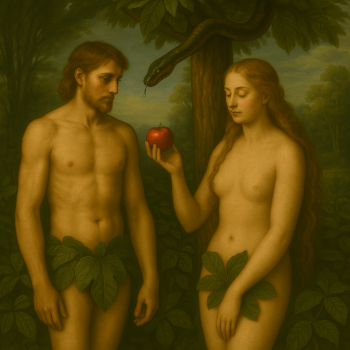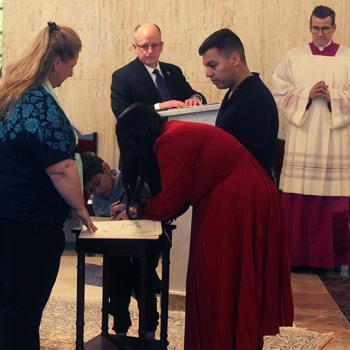It will be customary for reviewers of God in America to criticize it in any number of ways. Perhaps it had too much of one element, or not enough of another. Perhaps the dramatic performances presented religion too much as a solitary event of frustration, confusion, and struggle rather than a communal happening of joy, love, and pain. But rather than criticize the film, I want to forecast what a revision of it may look like in ten, twenty, or thirty years.
I imagine three big changes:
1) The West will become a primary site in the narrative. God in America tends to have an East-coast bias that has long dominated the historical profession and the study of American religious history. But the field is transforming. Matthew Avery Sutton's and Darren Dochuk's work on Christian conservatism centers upon the West Coast. Native Americans (who are mentioned in the beginning of God in America only to be neglected in the rest of the film) and Mormons (who are almost completely overlooked) are becoming increasingly important in new religious history from scholars like Tisa Wenger, Laurie Maffly-Kipp, and Sarah Gordon. In the future, the West may take center stage as a place of religious struggle, innovation, and power.
2) Issues of race will not be segregated to the Civil War and Civil Rights eras. God in America whitewashes most of American history and inserts African Americans as if from nowhere in the mid-19th century debates over slavery. Then two hours later, we see African Americans in the Civil Rights crusades of the mid-20th century. This whitewashing is matched by the academic talking heads who are all-white unless black Americans are being discussed. In the future, the religious pluralism (Muslim slaves, for instance) and dynamism of Africans and their descendants will be told with greater depth in future films.
Moreover, the power of race will break free into the rest of the narrative. Jamestown was formed by God-fearing Englishmen before Massachusetts Bay, and had African residents before the New England Puritans were even on the Atlantic Ocean. This African presence wrought complicated notions of religious freedom -- far more complicated than God in America suggests. Great Awakening preacher Jonathan Edwards owned slaves and renamed them; Abraham Lincoln's moral vision encompassed emancipation, but also propositions for ridding the nation of all black Americans. How did the United States devolve from the moral beauty of his Second Inaugural into the hellish nightmare of racial lynchings that were predicated upon representations of black men as "demonic" and "soulless"? To reckon with race, the next iteration of God in America will focus more on community, violence, and the limits of religious freedom.
And 3) the body and bodies will become an important place of telling and examining religion in America. For most individuals in God in America, religion stands as something of the mind. By themselves, the historical figures argue within themselves about the role of God in their lives. Faith happens in their minds and with their words. But bodies and presentations of bodies matter. God in America's male Puritans, for instance, are shifty-eyed, sweaty, and fidgety in their bodies. Anne Hutchinson's body shows a calm demeanor, stoic control over her hands, arms, and neck, and clarity of verbal articulation. We rarely hear the voices of black women, but we certainly see their bodies -- even one photograph of a black woman nursing. Is that religious? I believe it is, but the verbal narration makes no sense of it. Religious theorist Anthony Pinn has recently called for more attention to the body. Through it and representations of it, we can think of religion in a more holistic manner, encompassing not just mental and psychological struggles, but lived experiences, sex and sexuality, and the dilemmas of trying to comprehend souls through the mechanism of bodies.
God in America should be watched, celebrated, and used in classrooms all over the nation. What Ken Burns did for the Civil War, now God in America has done for religion in America. There is more work to be done, but it is being done. The next thirty years will transform the stories and myths of American religious history in new ways. While we wait for the next iteration of a film like this, we can be grateful for the work that now stands before us. God in America has shown so thoroughly that faith and reflections about God have defined so much of what America is and who Americans think they are.
Edward J. Blum, a historian at San Diego State University, is the award-winning author of Reforging the White Republic: Race, Religion, and American Nationalism (2005) and W. E. B. Du Bois, American Prophet (2009).




